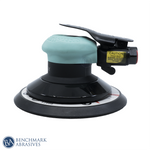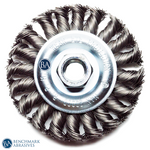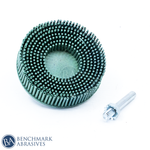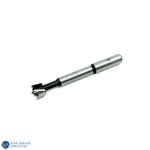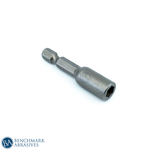How To Drill Through Metal | Drilling Tips And Tricks

How can you tell if you have the right tools for the task if your DIY project calls for drilling through metal? Metal can be drilled through with a standard hand drill despite looking like a complex material to work with. For all the information you need, keep reading, and with a bit of perseverance, you can drill metal securely for any job!
GETTING STARTED (FINDING YOUR CENTER)
You must locate your center and begin drilling the hole before drilling a hole in metal. You will need this to drill the hole exactly where you want it. Usually, a center punch or a prick punch is used for this. Most likely, you've already thrown a center punch. Set the point where you want the hole to begin, then use a ball-peen hammer to strike the end.
It's crucial to avoid using a claw hammer because both the center punch and the hammer are tough. A hardened tool should never be struck against another set tool to prevent chipping. This leads to significant eye damage every year. Because of this, hammers are always accompanied by a reminder to use safety glasses.
A prick punch is similar to a center punch but has a sharper tip. Use it to find a place that is more precisely defined, and then employ a center punch to create a deeper, broader hole. To avoid damaging the tip, only use the prick punch on aluminum and mild steel, which are soft metals.
Woodworkers prefer automatic spring-loaded center punches. These work very well with aluminum alloys. Although they can be used on mild steel, their fine tip wears out faster than prick punches and center punches. To use them, align the point and press the handle down. An automated mechanism initiates the punch.
PILOT HOLE DRILLING INTO METAL
Drill a pilot hole after selecting a bit starting location. A pilot hole is a tiny hole that is followed by your main drill bit. To make it simpler for the more significant bits to bore straight through, pilot holes remove some of the material. I don't drill pilot holes with my drill press when drilling holes less than 1/2-inch diameter. I drill pilot holes for 3/8-inch and wider holes with a hand drill.
HOW TO DRILL THROUGH VARIOUS TYPES OF METAL
There are a lot of different kinds of metal available. Alloys like brass or bronze, carbon steels like mild and stainless steel, and aluminum are the most common materials that most of us utilize. Every metal requires a different approach from the machinist, who wants to know what kind of steel or alloy they are working with. Due to the stresses a particular joint must withstand, they might request 6061T6 aluminum for one component of a project. In addition, they might ask 3003H14 aluminum for another. They frequently aim for tolerances of 0.0001 or higher.
Consider three broad categories for the average person: steel, stainless steel, and aluminum/alloys. If you encounter any problems after that, look up Google. Special procedures are needed for titanium or armor plating. Google is again your friend.
THE RIGHT BIT DECISIONS SET METALLURGICAL DRILLING TECHNIQUES
Drill bits come in numerous varieties. We just published a piece on the most influential metal drill bits. The essential metalworking tools to have in your toolbox are listed below.
HIGH-SPEED STEEL TWIST BITS
High-speed steel bits, often known as HHS bits, are more affordable than many other metal drilling bits and offer better value. Except for heavy metals like stainless steel, they operate flawlessly everywhere.
For the highest value in mild steels, we suggest titanium-coated drill bits. Black oxide performs well and is more affordable. These parts function better and last longer, thanks to the coating. The drawback is that you cannot preserve the coating while sharpening these pieces when they become dull.
HHS twist bits include tip shapes and have 118- or 135-degree angles. Formerly designed for soft steels like mild steel, aluminum, and other alloys, 118-degree bits are now made with 135-degree split tips by some manufacturers. Cobalt bits should be used to drill into more rigid metals, such as stainless steel.
COBALT DRILL BITS
Cobalt drill bits are twisted bits with five to eight percent cobalt added to make them more heat resistant. This helps them maintain their sharpness for longer. While the colors may differ, they appear to be the same as HHS. It's crucial to keep them separate from your standard twisting parts. The cobalt drill bits are more expensive than HSS bits, but you can sharpen them because cobalt is a structural component rather than a coating.
DEMING BITS AND SILVER
Many people drill holes up to 1/2 inch thick. How to drill through metal with greater depth remains a mystery. The key is to use silver and deming drill bits. Similar to Kleenex or Xerox, they bear the name of the firm that invented them, and the name has remained regardless of the maker. The majority of Silver and Deming bit sets come in sizes ranging from 1/2 inch to 1 inch and even 1.5 inches. Use the larger sizes only with a drill press and with the workpiece firmly fastened down for safety.
STEP BITS
A step bit, commonly called a unit, resembles a small metal Christmas tree if you have never seen one. Multiple hole sizes can be cut in thin metal with a single step bit. To use one, check the scale on the inside of the cutter to determine the number of "steps" the bit needs to take to create the right size hole. For instance, start your hole by counting the steps as you drill if you are using one that requires ten steps to reach a 2-inch diameter hole.
Stop at steps eight or nine if the task is crucial, and double-check the hole size. You will damage your workpiece if you drill too far. When drilling with step bits, lubricate the drill correctly.
USING HOLE SAWS AND ANNULAR CUTTERS TO DRILL HOLES IN METAL
Annular cutters are similar to metal hole saws. For a few holes here and there in metal, particularly in soft metals like aluminum, you can also utilize bi-metal hole saws. However, the experience could be better. The hole saws on these saws wear out significantly faster, and they are tremendously loud in metal. If the work is securely secured to your drill press, the process can be manageable.
They are using a drill press and annular cutters. Large holes in metal are impossible to cut with a tabletop drill press's lack of power. This is true whether using a hole saw or an annular cutter on metal. Compared to hole saws, annular cutters resemble milling machines more. They are delightful to hold as they melt through metal.
APPLICATION AND COST OF ANNULAR CUTTERS AND HOLE SAWS
In the past, annular cutters were expensive. They are only slightly more costly right now. Today, a set of six high-quality tools that drill holes up to two inches can be purchased for less than $250. Since annular cutters have 3/4-inch squared-off shanks for use in magnetic drill presses, you'll need a Morse Taper MT2 adapter for your drill press to utilize them.
Strong electromagnets at the base of a magnetic drill press cling to ferrous metals like I-beams. Even when their grip is inverted, they keep it. As you might expect, the tool will fall to the ground if the power fails or someone kicks the power wire. They must be linked or secured with a strap as a backup.
WHEN DRILLING, USE HEAT AND CUTTING FLUID
One thing must be done after selecting your drill bit if you want it to work as long as possible: keep it cold. Cutting fluid cools the process and flushes chips and shavings away. Dripping some on the metal and biting both before and during the drilling or cutting process can accomplish this.
Applying it with a chip brush to a jar of cutting fluid you keep on hand for this purpose is one of the most effective ways to do it. Hoses, nozzles, and pumps on machine shop equipment continuously spray cutting fluid or coolant onto the workpiece and bit. Cast iron may be carved and drilled without cutting fluid.
HOW TO CHANGE THE PRESSURE AND SPEED WHEN DRILLING INTO METAL?
We have talked about the tools needed to drill a hole in metal. The first step in drilling through metal is technique. The difference is entirely in technique. The talent that will enable you to prepare metal successfully lies in the speed of your drill bit and the amount of downward force you apply to it.
Let's start by discussing drilling speed. As a general rule, move slowly. Set the low gear (typically symbolized by 1) on your hand drill. Slow it down dramatically with a drill press. However, the Internet is a whole of drilling speed tables that precisely indicate what speed you should use your drill for each material. This is depending on the size and type of bit you are using. Drill presses set speed more precisely than hand drills. When in doubt, drill metal at the slowest speed your drill will allow. Although there may be more effective methods, it will function without harming the bit.
The shavings will indicate your pressure level and whether you apply it correctly. You are not pressing down firmly enough to allow the bit to cut if you notice dust or tiny metal flakes fully. When you produce continuous, several-inch shavings, you know you are using the correct pressure. My shavings are usually one foot long. They finally break off due to their length and swirl around in the air. You must wear safety eyewear.
BREAKTHROUGH: THE KEY TO DRILLING THROUGH METAL
Drilling a hole in any material, but a metal hole, is most hazardous when you break through. As a result, slow down and release the pressure as you approach the other side. Hold onto the workpiece (if it is not held down) tightly. The bit will likely fling it and yank it from your hands. Clamping down on the workpiece is crucial for this reason. When a piece of steel spins around at 300 RPM, trying to shatter anything, it makes for an "exciting" time!
METALLURGICAL DRILLING - CLEANUP
Refrain from sweeping your hand across the workpiece to remove metal shavings once you've finished your hole like with wood. If you do, tiny skin wounds on your hand will cause itching for a week. Put a chip brush there. They obtained their moniker this way. They aren't intended to be used as brushes. Machine shops use chip brushes to sweep up metal chips.
Clean the floor and shoe soles after finishing with the drill press. You don't want to leave metal crumbs in nearby rooms. They are pretty uncomfortable to step on barefoot, and you can never get them out of the carpet. You keep stepping on them.
CONCLUSION
Drilling through metal is relatively easy. Your shave will be at least six inches long if you use a sharp bit, the proper pressure, speed, and cutting fluid. When you reach that point, you know you're doing everything correctly, and drilling holes in metal becomes enjoyable—though a bit dirty.












